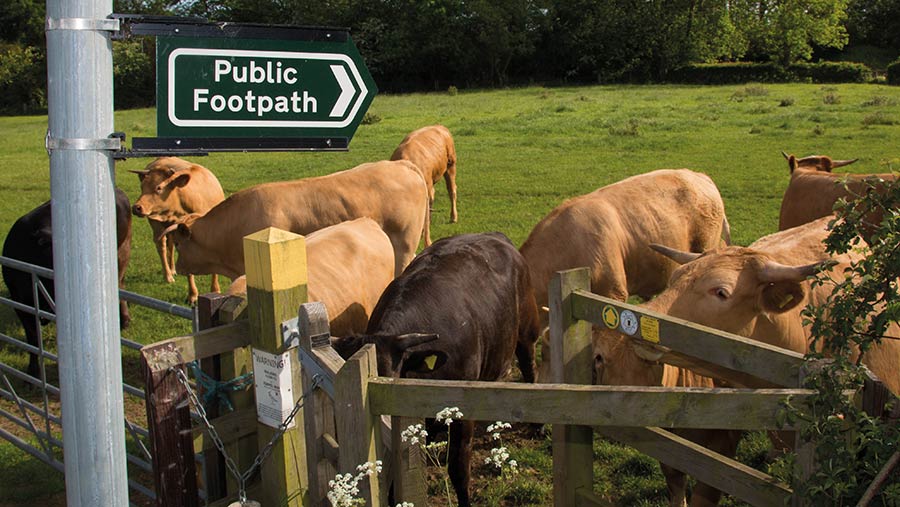Opinion: Remember the safety risks when managing cattle
 © Tim Scrivener
© Tim Scrivener Kathryn Hart is a partner in the personal injury team at Lime Solicitors. Ahead of farm safety week (19-23 July), she highlights the need to think safety when mixing cattle and people.
Three very different accidents, but with the same common cause, highlight the hazards and potential tragedies caused by cattle on British farms.
One of these involved water buffalo when, in May 2020, Ralph Jump, 57, who kept the animals at his Monmouthshire farm, entered the field to free the hay ring for his bull, after it became caught on an electric fence.
He was attacked by the bull, and his 19-year-old son, Peter, who went to his aid, was also injured. Both men died.
See also: 5 tips to stay legal when grazing stock on public footpaths
In a second accident, Marian Clode was killed when on holiday in Northumberland. She and her family were walking on a public bridleway at the same time as the farmer was moving his cattle to winter pasture. A group of cows broke away and stampeded down the track.
Mrs Clode was unable to get out of the way and was repeatedly hit, causing fatal injuries.
Giving evidence at the subsequent inquest, the farmer said he had been moving cattle for more than 40 years without incident. He conceded: “I think, with hindsight, we could all do things differently, but at the time I thought we had a good plan that reduced the risks.”
The third incident was in Northern Ireland, when 24-year-old Ian Beacom, working on his family farm, was crushed by a cow when he got into the cattle crush to administer medication. Although his spleen was ruptured in two places, prompt attention at hospital saved his life.
He said: “I was a bit too comfortable, which led me to do something I shouldn’t have done, which was get into the crush with the cow.”
These are not isolated incidents, as each year on average five people are killed in accidents involving cattle.
What these cases highlight, however, is both the unpredictability of cattle and that taking the same action safely for many years can give you a false sense of security.
With hindsight, doubtless all of these farmers would have behaved differently. It seems likely that they regarded their animals as placid, but when the animals behaved in an unexpected way, the consequences were severe.
When assessing risk you need to expect the unexpected. In other words, consider and plan for the worst-case scenario when dealing with live animals.
As a farmer, you also have a duty of care to members of the public coming into contact with your cattle, and you need to minimise the risk. So look at your risk assessment with an open mind and think about what else you can do.
Signs alerting members of the public to the presence of cows and calves in areas to which they have access can be informative. On its own, however, that is not enough, as many people will know nothing about cattle.
Where practicable, cattle should be kept in areas without public access. Where not, possible temporary alternative routes can be offered, with adequate signposting to avoid unwitting mistakes.
You may need to revise your plans for moving cattle. You may need extra people to warn of their approach. You may need extra temporary fencing. You may save a life.
